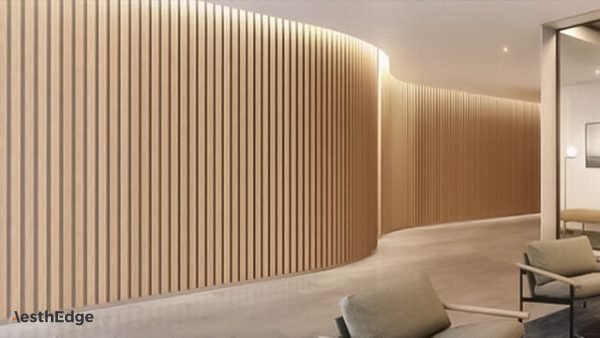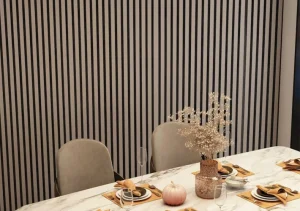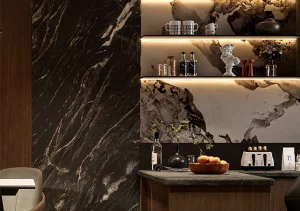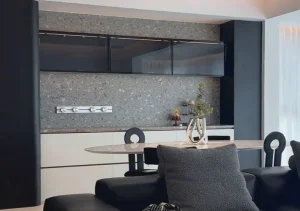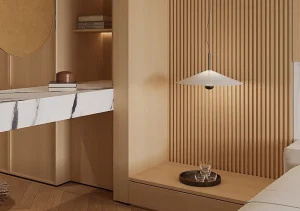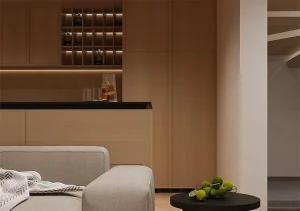Table of Contents
ToggleIntroduction
Wood-Plastic Composite (WPC) wall panels have become a leading choice in modern construction, particularly in regions where harsh weather conditions are a concern. Made from a mixture of wood fibers, plastic, and various additives, WPC panels combine the best properties of both wood and plastic. These panels provide numerous advantages over traditional materials, especially in terms of performance, durability, and sustainability. With increasing demand for building materials that offer superior protection against environmental factors, WPC wall panels stand out for their resilience in the face of weathering elements such as moisture, UV radiation, temperature extremes, and mold growth.
In this article, we will explore the specific benefits of WPC wall panels, with a particular focus on their ability to withstand various weather conditions, resist UV damage, and prevent moisture and mold-related issues. We will also cover how these panels adapt to harsh environments, making them an ideal solution for both residential and commercial applications. By the end of this article, you will have a comprehensive understanding of why WPC wall panels are an excellent choice for any construction project that demands long-lasting, reliable performance.
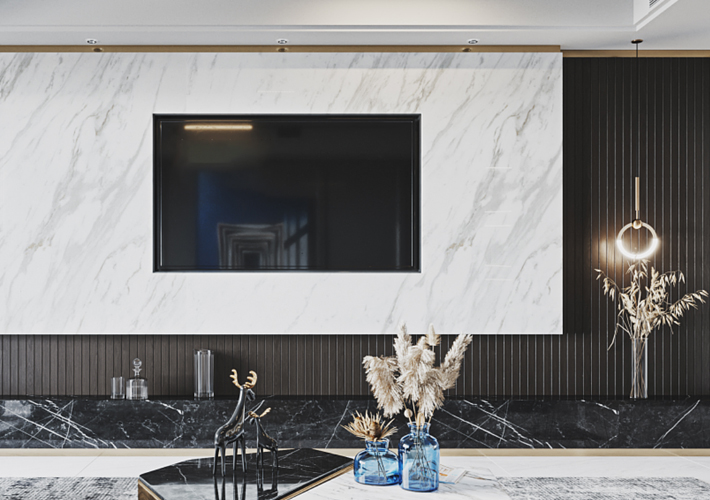
1.What Are WPC Wall Panels?
WPC wall panels are a composite material made from a blend of wood fibers, thermoplastic resins (such as polyethylene or polypropylene), and various additives that improve performance and longevity. These panels are engineered to mimic the look and feel of traditional wood but with far greater durability and reduced maintenance.
Composition:
The core of WPC is wood fiber, which is mixed with plastics to create a strong, weather-resistant material. The specific combination of these elements gives WPC its characteristic durability and versatility, making it an ideal material for both interior and exterior applications.
Comparison to Traditional Materials:
WPC panels are superior to traditional materials like pure wood or plastic for several reasons. Unlike pure wood, WPC is resistant to water absorption, rot, and pests, which can compromise the integrity of wood over time. On the other hand, compared to plastic, WPC offers a more natural look and feel while maintaining the structural advantages of plastic, such as its resistance to moisture and UV damage.
Environmental Benefits:
WPC panels are also an eco-friendly option. They are made from recycled materials, reducing the environmental impact of both production and disposal. Additionally, because WPC panels do not require frequent maintenance or replacement, they contribute to sustainable building practices.
2.Weather Resistance of WPC Wall Panels
Definition of Weather Resistance:
Weather resistance refers to the ability of a material to withstand the various environmental factors it might be exposed to, such as rain, wind, heat, and cold. In the context of building materials, weather-resistant products are essential for ensuring the structural integrity and longevity of a building, especially in areas prone to harsh weather conditions.
Rain Resistance:
WPC panels are inherently water-resistant due to their composite construction. Unlike traditional wood panels that absorb water and swell, WPC panels have a closed-cell structure that prevents moisture from penetrating. This makes them an excellent choice for regions with heavy rainfall or high humidity levels. The moisture resistance also ensures that WPC panels do not warp, crack, or lose their shape after prolonged exposure to rain.
Wind Resistance:
In areas prone to high winds, WPC wall panels perform excellently. Unlike other materials like thin plastic or untreated wood, WPC is dense and strong, meaning it can withstand impacts from flying debris or the force of strong gusts without cracking or breaking. The material is also less likely to shift or lose its position when exposed to wind, which can be a concern with other, less durable cladding options.
Heat Resistance:
WPC wall panels are designed to withstand high temperatures, making them suitable for climates where extreme heat is a concern. High heat can cause materials to expand and contract, leading to cracking or warping. However, WPC’s robust structure allows it to retain its shape, even in hot conditions. Additionally, some manufacturers incorporate heat-reflective additives that reduce the amount of heat absorbed by the panels, making them more suitable for warmer climates.
Cold Resistance:
In freezing conditions, traditional materials like wood or plaster may crack or freeze, which compromises their effectiveness as building materials. WPC wall panels, on the other hand, are resistant to low temperatures. The material’s stability in cold climates prevents the expansion and contraction associated with temperature fluctuations. This makes WPC panels an excellent choice for areas that experience freezing winters without the risk of cracking or warping.
Case Studies:
WPC panels have been successfully used in areas like coastal towns, mountainous regions, and places with frequent weather extremes, demonstrating their ability to endure the elements without significant degradation. Projects in places such as the Pacific Northwest and areas in Northern Europe have highlighted the effectiveness of WPC in resisting weather-related damage.
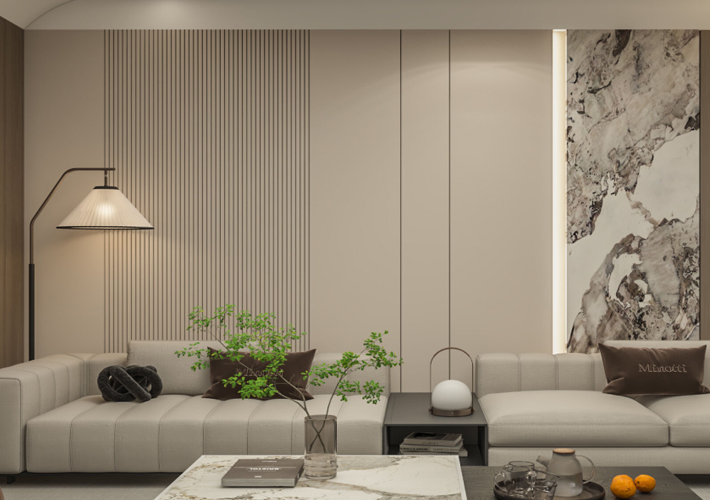
3.Resistance to Ultraviolet (UV) Rays
Understanding UV Degradation:
Ultraviolet (UV) rays from the sun can cause significant damage to building materials over time. UV radiation breaks down the molecular structure of materials, leading to fading, discoloration, and weakening. Traditional materials like wood and plastic are particularly susceptible to UV damage, which can result in the need for regular maintenance and replacement.
UV Resistance of WPC Panels:
WPC wall panels are specifically designed to resist UV degradation. Through the use of UV inhibitors and stabilizers, these panels maintain their color and structural integrity even after prolonged exposure to sunlight. This feature significantly reduces the need for repainting or re-coating, which is often necessary with wood and some plastics.
Additives in WPC for UV Protection:
Many manufacturers add UV-blocking agents during the production of WPC panels to ensure that the material does not degrade under sun exposure. These additives form a protective barrier on the surface of the panels, reflecting UV rays and preventing them from penetrating the material.
Long-Lasting Color and Aesthetic Appeal:
The UV-resistant properties of WPC panels help them retain their original color for years, even in regions with intense sun exposure. This contrasts sharply with traditional wood, which may lose its vibrant appearance or turn grey as it ages due to UV exposure.
Comparison with Other Materials:
While other materials such as vinyl or composite wood may provide some level of UV resistance, WPC panels offer a superior balance of aesthetics and durability. For instance, wood tends to fade quickly and needs frequent sealing or staining to maintain its look. In contrast, WPC panels require minimal maintenance, making them an excellent choice for building projects aiming for long-term performance and visual appeal.
Industry Testing and Certification:
WPC panels undergo rigorous testing to ensure their UV resistance. Independent certifications and quality assurance measures confirm that WPC panels meet or exceed industry standards for UV protection. These certifications offer further peace of mind for builders and contractors choosing WPC for their projects.
4.Moisture and Mold Resistance
Moisture Issues in Traditional Materials:
One of the major drawbacks of traditional materials like wood, plaster, or drywall is their tendency to absorb moisture. When exposed to water or high humidity, these materials can warp, rot, or degrade, leading to costly repairs or replacements. Mold and mildew growth are also significant concerns when moisture is trapped in building materials.
Moisture Resistance of WPC Panels:
WPC wall panels are engineered to be highly resistant to moisture. The composite structure of WPC prevents water absorption, keeping the panels dry and stable in both wet and damp conditions. This makes WPC an excellent material for areas prone to rain, high humidity, or water exposure, such as bathrooms, kitchens, and coastal regions.
Prevention of Mold and Mildew Growth:
Because WPC does not absorb moisture, the risk of mold and mildew growth is greatly reduced. Mold thrives in damp environments, particularly on materials like wood, which can harbor water and provide a breeding ground for fungi. With WPC panels, the closed-cell structure ensures that water cannot penetrate the material, making it resistant to mold growth and ensuring a healthier environment.
Benefits for Health and Safety:
Mold is not only a structural problem but also a health hazard. By choosing WPC wall panels, builders and homeowners can reduce the risks associated with mold and mildew. WPC panels are a safer alternative to wood, which can contribute to indoor air quality issues and allergic reactions.
Example Projects:
In coastal regions, where high humidity and saltwater exposure are common, WPC panels have proven to be highly effective in maintaining structural integrity while preventing mold and moisture damage. In commercial and residential buildings near the water, WPC provides a durable and reliable solution.

5.Durability and Long-Lasting Performance
Lifespan of WPC Wall Panels:
WPC wall panels are designed to be highly durable, with a lifespan significantly longer than traditional wood, plaster, or vinyl materials. Unlike wood, which can rot, split, or be eaten by pests, WPC panels maintain their integrity over time, providing a long-lasting solution for building exteriors and interiors.
Resistance to Wear and Tear:
WPC panels are highly resistant to scratches, dents, and other forms of wear and tear that can degrade the appearance and functionality of traditional materials. The tough exterior of WPC ensures that the panels retain their original form and finish even after years of use. This is particularly beneficial in high-traffic areas or buildings exposed to heavy winds or storms.
Maintenance Requirements:
WPC panels require very little maintenance compared to wood or plastic materials. They do not need to be stained, painted, or sealed regularly, which saves time and money. Routine cleaning with soap and water is often enough to maintain the panels’ appearance and performance, making them a low-maintenance option for both residential and commercial buildings.
Cost-Effectiveness:
Although the initial cost of WPC wall panels may be slightly higher than traditional materials, the long-term savings in maintenance and replacement make them an economically sound investment. The durability and low-maintenance requirements of WPC ensure that these panels deliver value for money over the years.
6.Adaptability to Harsh Weather Conditions
WPC wall panels are highly adaptable to harsh weather conditions, making them suitable for use in a wide range of climates. Whether it’s scorching heat, freezing cold, or high humidity, WPC panels are designed to endure extreme conditions.
- Hot Climates: WPC panels are ideal for regions with extreme heat. They do not absorb heat like traditional materials, which can reduce the cooling load on buildings and contribute to energy savings. The panels remain stable even when exposed to high temperatures, preventing warping or fading.
- Cold Climates: In colder regions, WPC panels are resistant to freezing temperatures and are less likely to crack or split when exposed to snow and ice. The material’s ability to withstand low temperatures without losing its shape makes it a reliable option for buildings in areas with harsh winters.
- Coastal Climates: WPC panels are highly resistant to the salt and moisture present in coastal environments. Unlike wood, which can deteriorate rapidly in salty air, WPC is impervious to the damaging effects of saltwater, making it a great choice for seaside buildings.

Conclusion
WPC wall panels offer a range of advantages that make them a top choice for construction projects in various climates and environments. Their excellent weather resistance, UV protection, moisture resistance, and durability make them an ideal option for both residential and commercial buildings. The adaptability of WPC panels to extreme weather conditions, including hot, cold, and coastal climates, ensures that they provide long-lasting protection and aesthetic appeal without the need for frequent maintenance.
By choosing WPC panels, builders and property owners can enjoy a low-maintenance, cost-effective, and environmentally friendly solution that enhances the lifespan and performance of their structures. As the construction industry continues to prioritize sustainability, durability, and performance, WPC wall panels will remain a key material of choice for modern architecture.
We are wpc wall panel factory in China. Contact us to get the latest prices and latest designs!

